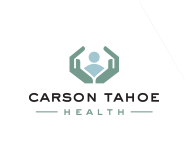This summer, don’t let hip and knee pain hold you back.
A multitude of things can affect how your joints feel, including the seasons. If your joint pain seems to fluctuate with the weather, it’s not just your imagination. It’s possible that warmer weather can help alleviate joint pain, while in contrast, cold rainy days might make joint pain worse.
“Warmer weather tends to lead to increased blood flow through increased blood vessel dilation known as vasodilation,” explains Paul Bindert, DPT, ATC, Physical Therapist at Carson Tahoe Health. “This can alleviate joint inflammation and reduce pain.”
But why can your joints feel an oncoming storm? Research is still ongoing, but it may have something to do with changes in barometric pressure. Air pressure changes can cause your muscles and tendons to expand or contract, which can bring about joint pain. However, warmer weather can cause its own issues as well.
“There’s a possibility that increased blood flow can increase inflammation instead of decrease it,” Bindert says. “When that’s the case for patients, I recommend at-home methods for managing joint pain, such as ice, elevation, and over-the-counter anti-inflammatory medications.”
Make Your Move
Another way to alleviate joint pain, whatever the weather, is exercise. Physical activity is one of the most commonly recommended ways to improve joint health and alleviate pain, especially for people with arthritis.
“Movement is key, regardless of distance,” Bindert says. “As long as you’re moving, you’re improving your bone health, cardiovascular strength, and mobility. I tell my patients motion is lotion—the more you move, the more you’ll be able to keep moving.”
If you struggle with joint pain, focus on low-impact, weight-bearing exercises, such as walking or biking. These exercises will provide multiple health benefits but will be easier on your joints. Also, be sure to take the proper time to warm up and cool down when exercising.
“Before you exercise, you’ve got to make sure your joints are ready,” Bindert says. “Warming up before exercise helps circulate synovial fluid, which helps lubricate your joints and allows for better movement.”
It’s Going Swimmingly
Summer is the perfect time to take up swimming for exercise. Swimming can get your heart rate up and is easy on your joints. You’ll feel a difference the minute you wade into the shallow or deep end.
“It all comes down to buoyancy, which increases as weight-bearing decreases,” Bindert says. “You’ve decreased your weight-bearing by half when you’re up to your waist and to only 7 percent when you’re submerged up to your neck, making the effort to move just a fraction of what it’s like on land.”
Not only does exercising in water off-load your joints, but the compression from being in water can also help decrease inflammation. The result? A workout that helps you make all the right moves without adding stress to your aching joints.
If you’re new to swimming, start slowly, exercising in 5- to 10-minute increments so your body gets used to being in the water. You don’t have to actually swim, either; walking laps in a pool provides excellent health benefits, as well. You can even try walking backwards; it engages more muscles in your legs and spine, according to research from Japan.
Ask the Experts
Whatever causes your joint pain, there are numerous steps you can take to help alleviate your ache. Each person experiences joint pain differently, and what helps someone else may not be the solution for you. Working with a physical therapist can help you find the best way to manage your joint pain.
To schedule a physical therapy appointment with Carson Tahoe Therapy, call (775) 445-5757.







